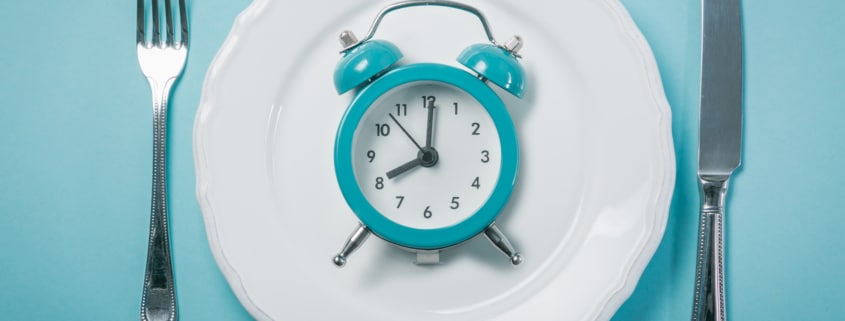Fasting and the Spurious
JED WIGHTMAN PERFORMANCE/SPORTS NUTRITIONIST ADVANTAGE FITNESS LTD
This article has been written for Canadian Physique Alliance – July/Aug 2021 Edition

Fasting and intermittent fasting are fast becoming some of the most popular trends in the nutritional world today. Introduced into popular culture around 2012 due to a BBC special on the topic by Dr. Michael Mosley it has since taken off like wildfire especially in the last few years.
Intermittent fasting more so than fasting itself has really gained traction and serious momentum. I am asked often on my different business platforms and from clients and random people all the time. “What are the benefits, how long should I do it for, is it dangerous, is it safe?” “What is the best information on telling me how to properly apply it and all of the benefits and what procedures to take”.
So this article is dedicated to that, and in the title alludes to the myths involving the incorrect applications, the absolute wrong way to do this. Now because there’s so much misinformation out there, incorrect advice and rhetoric encourage trends without much credit to effective procedure. Nevertheless, intermittent fasting is incredibly beneficial and such a powerful tool if used correctly, but only when applied correctly and used in a strategy that can render all of the benefits and stave off any of the pitfalls. So let’s “dig in” to this subject and shed light on this awesome tool.
Since Ancient times fasting has been used for spiritual and religious purposes. It has been recorded as far back as Ancient Greece. Well-known characters such as Pythagoras, Epinemdimus and Abaris extolled the virtues and importance of fasting as it pertained to their belief system. It was believed that stopping eating for periods of time was a way to ward off entry of demonic forces. Also, great emphasis was placed upon fasting as a way to bring about ecstatic forces, dreams and visions.
In biblical times it has been recorded that Moses, Elias and John the Baptist were all proponents of fasting. Moving even further forward in history, in the Muslim religion, since the 700’s, Ramadan has been a month of fasting from dawn until dusk.
And the world’s religions from the old testament to the Jewish faith, to Muslims and east and south Asians fasting has been a foundational part of all of these cultures because of their religious and political beliefs. Fasting has even been used as a form of protest, and still is today called hunger strikes. So as we see it is clearly nothing new to our world. It is deeply woven into the cultural beliefs of so many.
For the purpose of health and weight loss it has actually been used since the mid-1800s. Doctor EH Dewey wrote a book on the topic popularizing this into the modern world. I love this quote from his book “ every disease that affects mankind develops from, more or less, eating in excess of a supply of gastric juices“.
 For the next three decades doctors and medical professionals would regularly use fasting methods to help fight extreme obesity and successful medication to reverse effects of chronic illness, and the like. However, it was taken to an extreme. Things like fluid and mineral intake were not taken into enough consideration and unfortunately applied to a vast myriad of ailments. This Practice did much harm to some who didn’t need starvation but rather proper exercise and a healthy nutritional foundation.
For the next three decades doctors and medical professionals would regularly use fasting methods to help fight extreme obesity and successful medication to reverse effects of chronic illness, and the like. However, it was taken to an extreme. Things like fluid and mineral intake were not taken into enough consideration and unfortunately applied to a vast myriad of ailments. This Practice did much harm to some who didn’t need starvation but rather proper exercise and a healthy nutritional foundation.
Re popularized in the 1940s with more accurate studies carried out on obese subjects, showed the effects to metabolism as they underwent long stretches of fasting for weight reduction. The practice ultimately became a more accepted method to treat obesity. Fast forward to current times and inside the last decade, even more studies have been effectively carried out and the data provided from the results shows, undeniably, important and very beneficial properties of correctly applied fasting.
So we now know a brief history that is one of the early applications. Let’s get deeper into the understanding of the range of benefits of intermittent fasting. Now first off, the thing that is on the minds of those people when they think “fasting” is weight loss.
Benefits of Intermittent Fasting
Body fat loss from correctly applied intermittent fasting has been shown in several human studies in recent times to be very effective. This is due to our overconsumption of simple carbohydrates. The North American diet is rife with processed and nutrient-devoid simple sugars and mechanically and chemically refined carbohydrates. When we eat sugars and refined grains like white flours and high fructose corn syrup and refined grains, they are quickly broken down into sugar, which our cells use for energy. If our cells don’t use it all, we store it in our fat cells as, well, fat. But sugar can only enter our cells with insulin, a hormone made in the pancreas. Insulin brings the sugar into the fat cells and keeps it there.
Between meals, as long as we don’t snack, our insulin levels will go down and our fat cells can then release their stored sugar, to be used as energy. We burn the carbs as energy.
Again we are not really burning fat yet, we are just burning through the carbohydrates we ate.
So if we go into an intermittent fast correctly timed then our body releases the storage of carbohydrate energy from the fat cell, discouraging the body to accumulate more fat from the store carbs. Then we have the potential if our nutrition is on point and exercise in check to burn fat more effectively in our waking hours.
This links to another very positive health benefit which is insulin sensitivity, lowering our levels of insulin production. As we know, diabetes type one and two is endemic in our culture. High blood sugar, high blood pressure heart disease atherosclerosis is all linked to the over consumption of simple and refined sugars and insulin resistance.
So, by limiting the intake of that toxic material, and proper intermittent fasting we are giving the body time to release stored sugars and give the pancreas a long and overdue break. We are helping to reverse a lifetime insulin overload and pancreatic stress, staving off onset insulin resistance and effectively regenerating our pancreas to its pulsatile insulin release protocol, lowering blood pressure and remove LDL cholesterol. Insulin is the catalyst for the deposition of these little fat globules in our arteries. This makes way for our HDL to do it’s job and move around our circulatory system and scrub and suck up all of the extra LDL improving our overall cholesterol balance.
One last very important point about the health benefits, especially for us building our bodies. We are eating machines and we want to be as efficient as possible right? Well these little things in our small intestine called micro villi (tiny hair-like projections which stick out into the open space inside your small intestine) they are what brings in the nutrients we digest and transfer to our bloodstream. When these get overwhelmed and desensitized, they die. We need to replenish them, they need to heal, and they need to regenerate. Essentially by us eating every 2 to 3 hours they don’t get that chance. They need at least 4 hours minimum without any activity to replenish and heal. So properly timed intermittent fasting allows this to happen, and this gives us more nutrient processing efficiency and we supercharge our body’s nutrient uptake potential to its highest capacity.
Key Points of Intermittent Fasting
There is so much misinformation today on intermittent fasting I could go on about this forever. However, I want to cover a few key points. For all of us again in the world of building our bodies, we want to have the best performance that we can, so, it is very important that we are not starving our bodies and using our muscles fuel. So by fasting, essentially starving, for long stretches during the day when we are active and moving around when everyone’s body requires fuel, we are diminishing our body’s growth and recovery potential.
 “Only eat between 4 PM and 8 PM at night”. Silly and irresponsibly applied fasts like this encourage the body to initiate survival mode when the person starts eating again after 20 hours of not eating, especially if the wrong foods are consumed when breaking that fast. Moreover, these people are then recommended to eat several big meals, or 1 big meal. Well the worst thing you can do breaking a fast is eating the wrong things like carbohydrate-rich materials when your body has been starving and moving around all day and the biological imperative of survival kicks in and insulin levels go crazy. Yes fat storage. Why? Because the bodies main concern is being able to keep itself alive and the way it does that is by storing nutrient-dense energy to live in food-scarce environments. Just like what took place above. Things like, just drink amino acids while fasting, well that’s not fasting is it? The purpose is not to put any nutrient-based material from a food source into the digestive tract while we are on the fast, plain and simple.
“Only eat between 4 PM and 8 PM at night”. Silly and irresponsibly applied fasts like this encourage the body to initiate survival mode when the person starts eating again after 20 hours of not eating, especially if the wrong foods are consumed when breaking that fast. Moreover, these people are then recommended to eat several big meals, or 1 big meal. Well the worst thing you can do breaking a fast is eating the wrong things like carbohydrate-rich materials when your body has been starving and moving around all day and the biological imperative of survival kicks in and insulin levels go crazy. Yes fat storage. Why? Because the bodies main concern is being able to keep itself alive and the way it does that is by storing nutrient-dense energy to live in food-scarce environments. Just like what took place above. Things like, just drink amino acids while fasting, well that’s not fasting is it? The purpose is not to put any nutrient-based material from a food source into the digestive tract while we are on the fast, plain and simple.
So it really comes down to proper timing and what we need to do when we are to break that fast if we want to experience all the amazing benefits of this tool in our nutritional arsenal. How uncomfortable is it going without food especially when we are building and recovering all the time, it sucks, FEED ME! Right? Now if we get used to starving our metabolism, it slows down and our body becomes a lot more familiar and comfortable with less food. Why, well mainly because we are eating our muscle ladies and gentlemen. So, do this right, set a timer for the fast, this is not the opinion of this one man, this is current research done on human beings, not rats, it really just is common sense.
 Finish your last meal give yourself a 12-hour window until you eat your first meal the next day. Over that time you are sleeping your body is at rest and in recovery. What better time to not have to be distracted by the fact that you’re not eating. When going longer than 12 hours yes people have shown more “weight” loss but really again, what we are doing is eating ourselves, we want to burn fat and maintain as much muscle as possible, creating insulin sensitivity and opening up new areas for you for new nutrient deposition. Now if you’re a runner, marathon enthusiast endurance athlete a Yogi or something of the like, well this is just fine for you. But if you were one of US, after 12 hours you are extremely catabolic. Ok, we know benefits are powerful and easily attained if we limit our fast to a window that doesn’t have us tip the catabolic anabolic scales to the negative.
Finish your last meal give yourself a 12-hour window until you eat your first meal the next day. Over that time you are sleeping your body is at rest and in recovery. What better time to not have to be distracted by the fact that you’re not eating. When going longer than 12 hours yes people have shown more “weight” loss but really again, what we are doing is eating ourselves, we want to burn fat and maintain as much muscle as possible, creating insulin sensitivity and opening up new areas for you for new nutrient deposition. Now if you’re a runner, marathon enthusiast endurance athlete a Yogi or something of the like, well this is just fine for you. But if you were one of US, after 12 hours you are extremely catabolic. Ok, we know benefits are powerful and easily attained if we limit our fast to a window that doesn’t have us tip the catabolic anabolic scales to the negative.
So much is out there that we can benefit from if we apply correctly. Equally the same things can be royally detrimental if irresponsibly used, improperly advised or not thoroughly planned, positioned and implemented. Like with anything we must be aware of all of the factors before we go headfirst into any endeavour. So I encourage you all if it suits you to benefit from intermittent fasting, apply it properly. Ultimately seeking professional advisory help with how to do this correctly is very important. There are many factors to consider. Like how to break the fast, what to eat at that time, incorporating cardio into the windows between the last and first meal, what kind of cardio, proper fluid intake, supplementation, vitamins and minerals etc. So here’s to more effective biohacking, and an always improving, healthier performing, longer living, leaner and stronger us!








